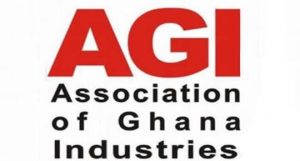The outlook for global oil markets darkened on Thursday after the International Energy Agency (IEA) said that slowing demand for crude in the wake of restrictions imposed to curb the fast-spreading Delta variant is colliding with a recent increase in global crude production.
But the news is likely to be welcomed by the White House, which on Wednesday prodded the Organization of the Petroleum Exporting Countries (OPEC) to open the oil taps further, which would help lower petrol prices in the United States during the height of the summer driving season.
The IEA’s latest oil market report said that global oil demand “abruptly reversed course in July, and the outlook for the remainder of 2021 has been downgraded due to the worsening progression of the [coronavirus] pandemic and revisions to historical data”.
Restrictions to curb the spread of the coronavirus’s Delta variant in China, the world’s largest importer of oil, as well as other parts of Asia are chipping away what had been a renewed appetite for crude this year.
The IEA now sees global oil demand rising by 5.3 million barrels per day (bpd) on average to 96.2 million bpd this year, and by a further 3.2 million bpd in 2022.
The timing could not be worse for the OPEC and its allies – a grouping known as OPEC+.
Last month, OPEC+ members agreed to open the taps to the tune of 400,000 bpd each month starting in August – a move meant to unwind output cuts imposed at the height of the pandemic last year.
That helped the world oil supply increase by 1.7 million barrels per day in July to 96.7 million barrels per day, the IEA report found. Production was also boosted after Saudi Arabia, OPEC+’s biggest producer, ended its voluntary production cuts and North Sea production rebounded after undergoing maintenance.
It wasn’t just OPEC+ members that increased oil production: producers outside of the cartel increased their output by 600,000 barrels per day this year, and their supply is “expected to rise by 1.7 million barrels per day in 2022, with the US accounting for 60 percent of the growth”, the IEA found.
OPEC released its own monthly oil market report on Thursday. The cartel’s outlook is only slightly rosier than the IEA’s.
OPEC sees oil demand rising by about 6 million bpd to an average of 96.6 million bpd this year – increasing by a further 3.3 million bpd in 2022 for an average of 99.9 million bpd.
US prods OPEC
The US is eager to get more oil flowing quickly as ramped-up demand during the country’s summer travel season runs up against lower supply, driving prices higher when Americans pay to fill up their cars at the petrol pump.
That’s politically inconvenient for US President Joe Biden, whose central bank chief, Jerome Powell, has been seeking to assuage fears that the inflation the country is experiencing is more than temporary.
High oil prices increase the cost of travel as well as transport, and the consumer price index (CPI) for all items rose 0.5 percent in July, with the price of food, shelter, energy and new vehicles all up, showed US Bureau of Labor Statistics data released Wednesday. Overall, CPI for all items is up 5.4 percent from last year.
The inflation the US is experiencing has also given Biden’s opposition fuel for their argument that the White House let the economy run too hot by pumping in too much stimulus money.
But Biden, Powell and Treasury Secretary Janet Yellen have maintained that the US economy needs more support to fully bounce back from the coronavirus recession, and that snapping the purse shut too soon would lead to an incomplete recovery.
High petrol prices in the US are also coming at a time when many Americans are off for their summer holidays and eager to travel, including by car. That makes high prices even less palatable. Indeed, the US gasoline index rose 2.4 percent in July, the second consecutive month of increases, and US gasoline prices have risen a staggering 41.8 percent over the past 12 months.
That is partly why Biden’s national security adviser, Jake Sullivan, released a statement on Wednesday calling on OPEC+ to up its output now, and saying that its recent moves to boost supply were “simply not enough”.
“President Biden has made clear that he wants Americans to have access to affordable and reliable energy, including at the pump,” Sullivan said in the statement.
The US is the largest producer of crude in the world — as well as the largest consumer. But US shale oil firms have higher production costs than OPEC’s biggest member, Saudi Arabia.
That leaves the US striking a delicate balance when it comes to oil prices: too high, and American consumers feel the pinch; too low, and US shale oil producers cannot stay in business because their prices aren’t competitive.
For their part, OPEC+ producers have been candid about their wariness of moving too quickly as the Delta variant surges.
The IEA noted the disconnect between increased demand and concerns about the variant in its latest report, writing that the crude price rally seen in the second quarter of this year “lost steam in July on fears that new COVID-19 Delta cases and weaker economic indicators could slow the oil demand recovery just as more supply hit the market”.
If the spread of the Delta coronavirus variant continues to pump the brakes on global oil demand growth, it could tip the balance back to an oil surplus in 2022. That leaves open the possibility that OPEC+ could revise its plans to unwind production cuts in the future.
As the IEA report noted, “OPEC+ can still pause, continue or even reverse its curbs as required by the market and it looks unlikely that the unwinding of cuts will continue on a linear trajectory in 2022.”







